CAPABILITIES
Vacuum Casting Service
We create master models and produce vacuum casting prototypes and end products based on your design using polyurethane material.
- Tolerances under ISO 2768 Coarse (C) for urethane casting (up to ±0.1 mm)
- Full-scale surface treatment facilities
- Quick lead time and competitive pricing





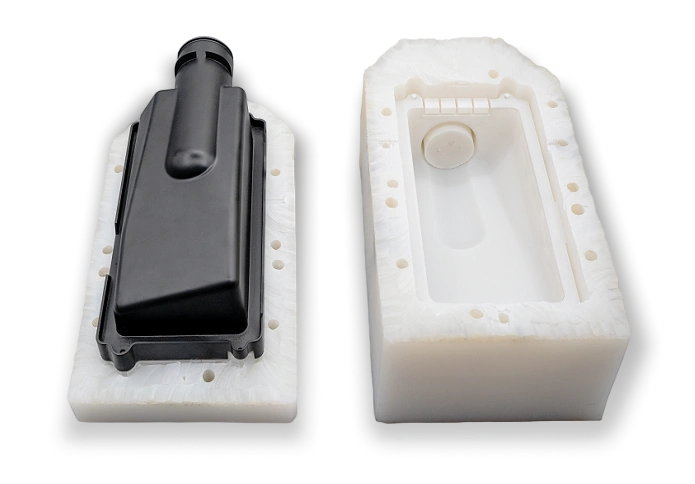
All uploads are secure and confidential.
Our Vacuum Casting Service
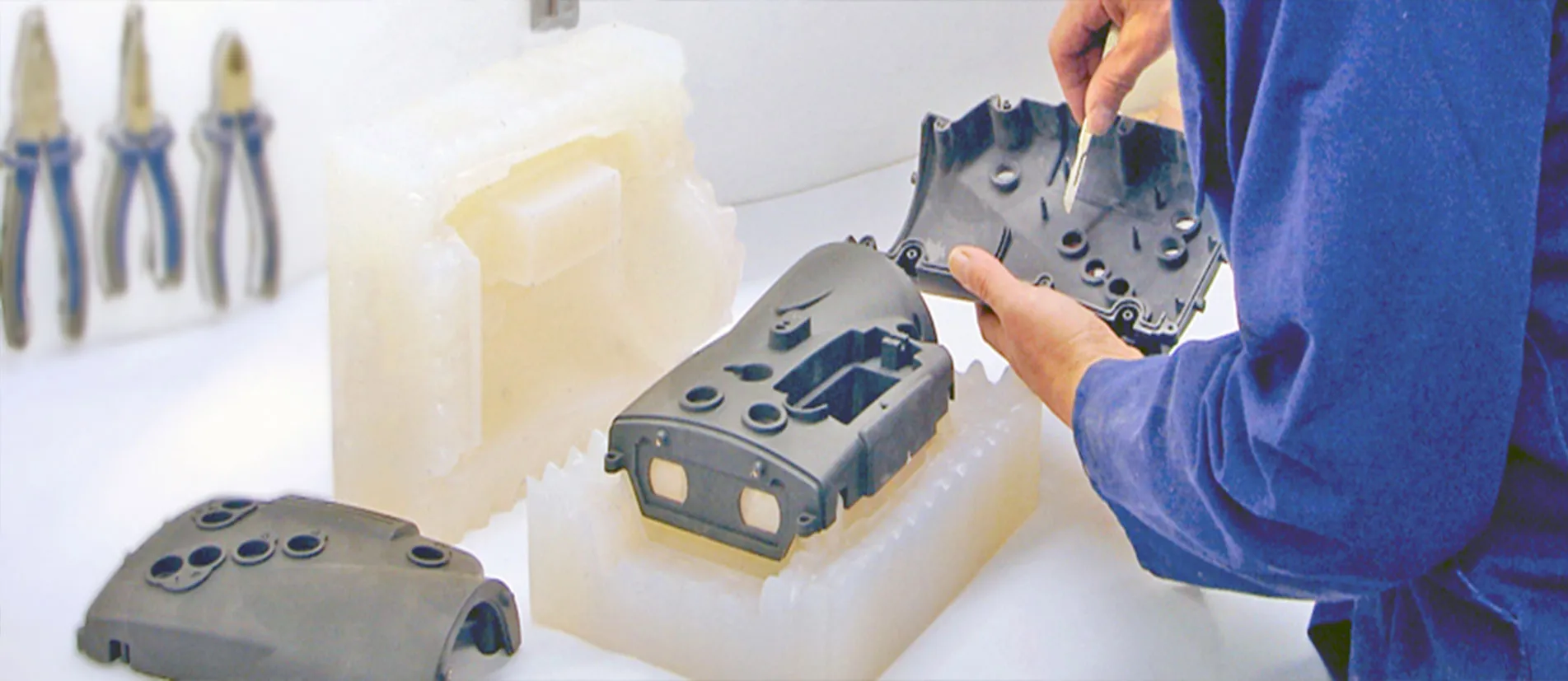
Vacuum casting is an advanced manufacturing technique for producing high-quality prototypes and low-volume parts. It starts with creating a master model called a pattern, a physical replication of the desired shape. Then, the cavity is formed using the model and mold material like silicone rubber. After that, the molten material is poured and solidified, producing strong and reliable components.
We use CNC machining and 3D printing to create accurate patterns. It allows us to guarantee the quality and speed. Consequently, our automated casting equipment maintains consistency across the production cycles.
- Advanced Casting Facility
- Several Material Options and Customization
- Expert Engineers and Technicians
- Thorough Inspection of Each Part with CMM and Other Instruments
Our Vacuum Casting Flow
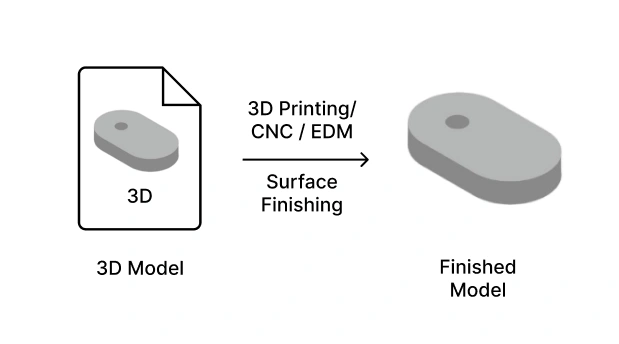
1. Master Model Creation
First, we made a detailed and accurate representation of the final part using 3D printing, CNC machining, or EDM machining. We finish the model further to ensure precise dimension and smoothness to make the perfect silicone mold.
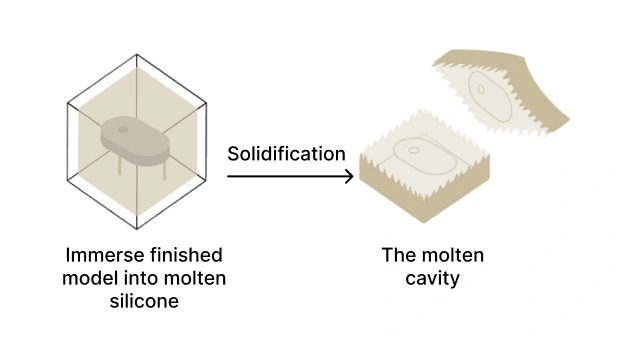
2. Mold Making
The immersion of the finished model into molten silicone and solidification forms the molten cavity. We ensure the mold is clean and contains all the required details before pouring.
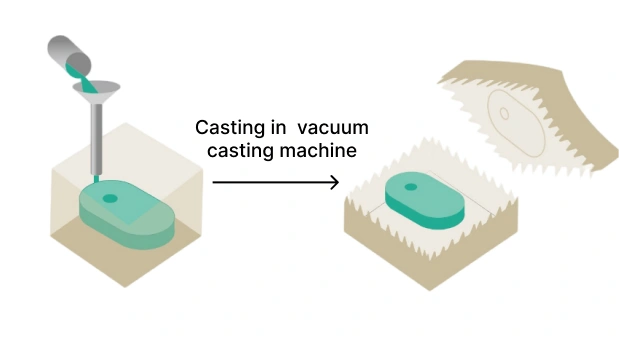
3. Casting
Our casting factory has advanced and automated vacuum casting machines compatible with molds of various sizes. The control system closely monitors the process, and sensors provide real-time feedback to adjust the parameters like temperature and curing time.
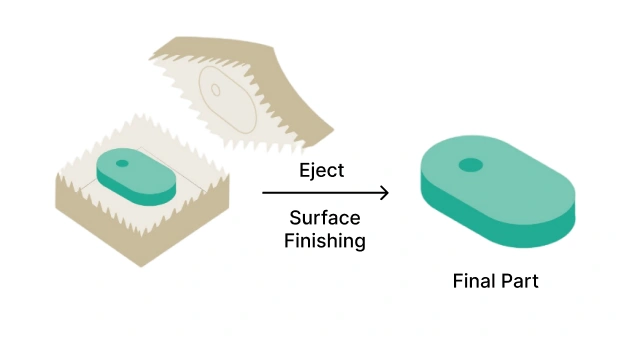
4. Demolding and Finishing
After the resin is fully cured, the part is ejected from the silicone mold and subjected to pos processes for surface finishing. We have several options; bead blasting, polishing, painting, etc.
Try Prolean Now!
Advantages of Vacuum Casting

- Precision and Detail
This casting method provides exceptional surface finish and intricate details. The silicone molds used in vacuum casting can capture fine features and textures from the master model.

- Cost-effective for Low Volumes
The initial setup costs are lower because the molds are made from silicone rather than expensive steel or aluminum, unlike injection molding. At the same time, the molds can be reused for up to 20 cycles.

- Material Versatility
It can accommodate diverse materials, including different types of polyurethane resins that can mimic the properties of production-grade plastics like ABS, PP, and even rubber-like materials.

- Flexibility and Customization
The silicone mold can accommodate complex geometries and undercuts that would be challenging for rigid injection molds. Additionally, the process allows for easy customization, such as color variation and material properties between the casting runs.

- Faster Turnaround Times
Once the master model is ready, creating the silicone molds and producing parts is relatively quick. This rapid process is especially beneficial for prototyping and small-batch production as it allows faster iterations and time-to-market.

- Reduced Waste
Vacuum casting is known for its efficient use of materials. The silicone molds can be reused multiple times, which reduces waste. Additionally, the process generates less scrap material than subtractive manufacturing methods.
Comparison with Other Manufacture Processes
| Feature/ Characteristic | Vacuum Casting | Injection Molding | Sand Casting | 3D Printing |
| Setup and Tooling Cost | Low | High due to expensive mold | Low to Moderate | High |
| Production Volume | Low to Medium | High | Suitable for both prototyping and large runs | Low to Medium |
| Production Speed | Quick for small batches | Ideal for large volumes | Slow due to mold preparation and cooling time | Moderate |
| Detail and Precision | Fine details from the master model | Excellent precision and strength | Less refined surfaces | Moderate to high |
| Cost per Part | cost-effective for low volumes | Cost-effective for large volumes | Cost varies with mold material and complexity | Varies with material and complexity |
| Flexibility | Easy change of materials, colors, and designs | It needs a new mold for design changes | The patterns need to be modified | Easy to modify designs |
| Surface Finish | Smooth and detailed surfaces | Smooth and consistent | Rough to Moderate | Good |
Vacuum Casting Materials
You get 20+ material Options for vacuum casting projects at ProleanTech; we use diverse polyurethane resins and other materials that can mimic the characteristics of mostly plastics like ABS, Polypropylene, nylon, etc. You can choose based on your end-use requirements like strength, hardness, flexibility, impact resistance, etc.
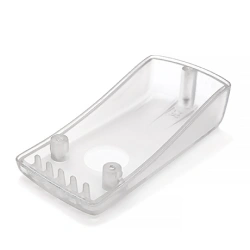 Rigid Clear Polyurethane (PU) Resins
Rigid Clear Polyurethane (PU) Resins
These are transparent and durable resins used for creating clear, rigid parts, such as optical parts, lenses, and transparent prototypes.
 Elastomeric Polyurethane
Elastomeric Polyurethane
It is a rubber-like flexible resin ideal for parts requiring flexibility and resilience—for instance, gaskets, seals, flexible prototypes, and footwear components.
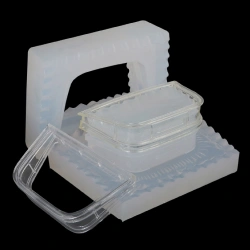 Silicon Rubber
Silicon Rubber
Silicon Rubber is used to make molds and soft elastic parts for diverse applications due to flexibility and durability.
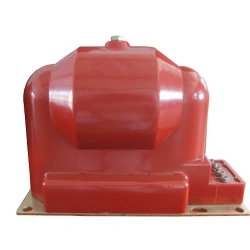 Epoxy Resins
Epoxy Resins
They offer excellent mechanical properties and chemical resistance, which makes them ideal for structural parts, automotive components, and electronic housings.
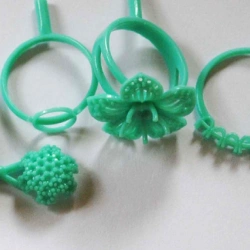 Wax
Wax
It is an easily moldable material used for models, patterns, and prototypes.
Rigid Clear Polyurethane (PU) Resins

Rigid Clear Polyurethane (PU) Resins:These are transparent and durable resins used for creating clear, rigid parts, such as optical parts, lenses, and transparent prototypes.
Elastomeric Polyurethane

Elastomeric Polyurethane:It is a rubber-like flexible resin ideal for parts requiring flexibility and resilience—for instance, gaskets, seals, flexible prototypes, and footwear components.
Silicon Rubber
![]()
Silicon Rubber: Silicon Rubber is used to make molds and soft elastic parts for diverse applications due to flexibility and durability.
Epoxy Resins

Epoxy Resins: Silicon Rubber is used to make molds and soft elastic parts for diverse applications due to flexibility and durability.
Wax

Wax: It is an easily moldable material used for models, patterns, and prototypes.
Finishing Options for Vacuum Casting
The vacuum casting parts can be finished using different techniques to achieve specific surface properties and appearance. At ProleanTech, we have various surface finishing options, tailored to your needs.
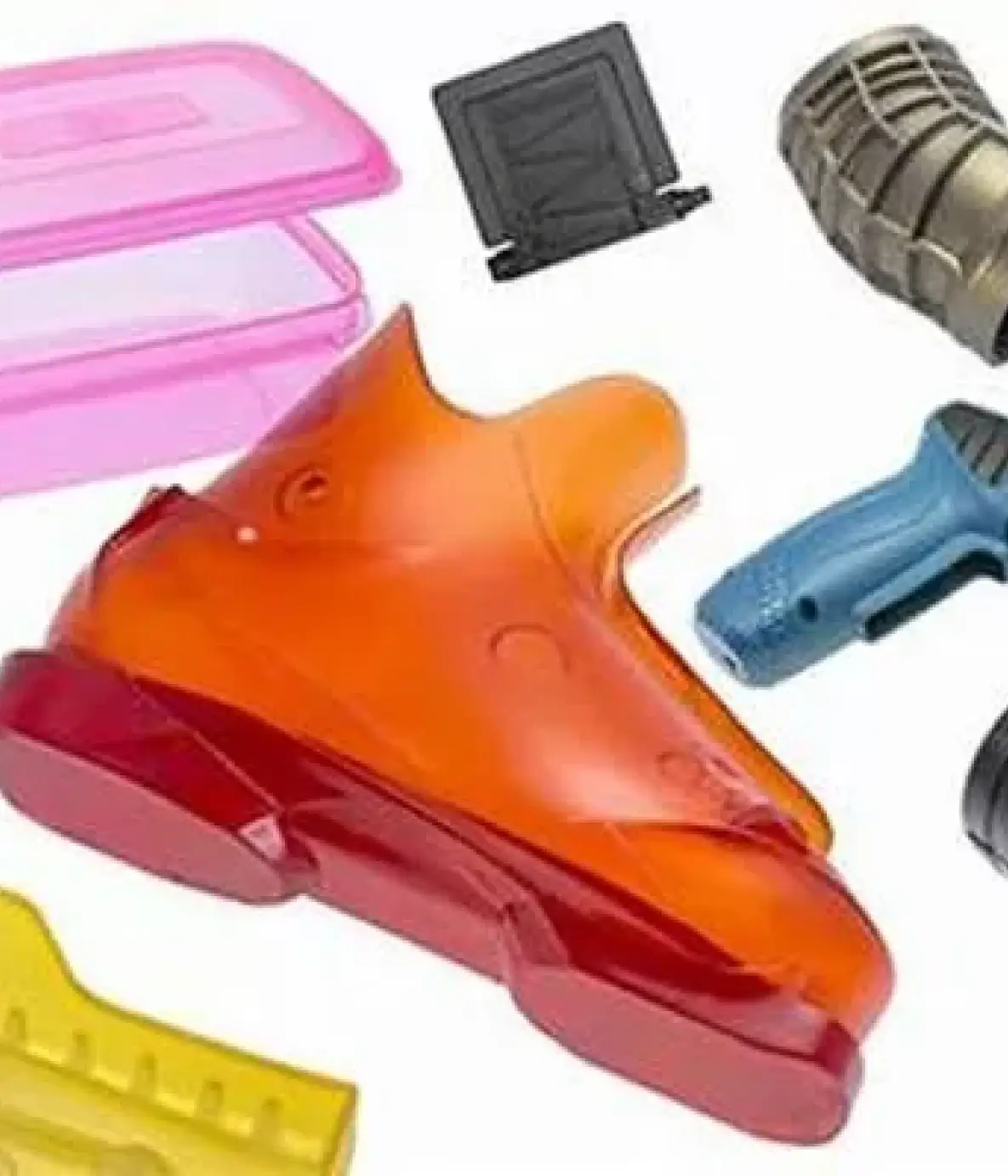
Frosted/Matte:
This surface has a slight roughness and is a common and versatile decorative surface. It is similar to sandblasted glass when applied to a transparent material.
Crystal Transparency: This effect is mainly achieved by the transparent resin, which can reach a shiny surface by polishing the part as much as possible.
Metallic Shades: A few microns are added to the surface of a vacuum-cast part by vacuum-evaporating the metal, giving the part a metallic sheen. It is a popular choice in prototyping consumer products and automobiles.
Color-textured surfaces: These finishes are done by wet-spraying colors onto vacuum-cast parts, with a choice of finishes ranging from matte to high-gloss.
Vacuum Casting Applications
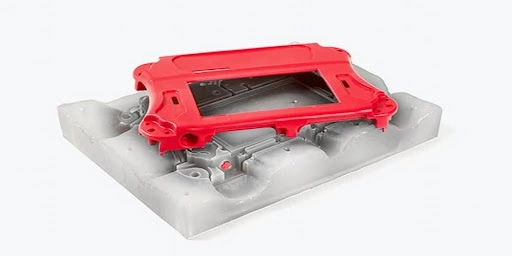
Medical Industry
Vacuum casting creates complex geometries with high precision and excellent surface finish, which is essential for medical applications such as hearing aid components, equipment prototyping, custom orthotics, orthodontic retainers, etc.
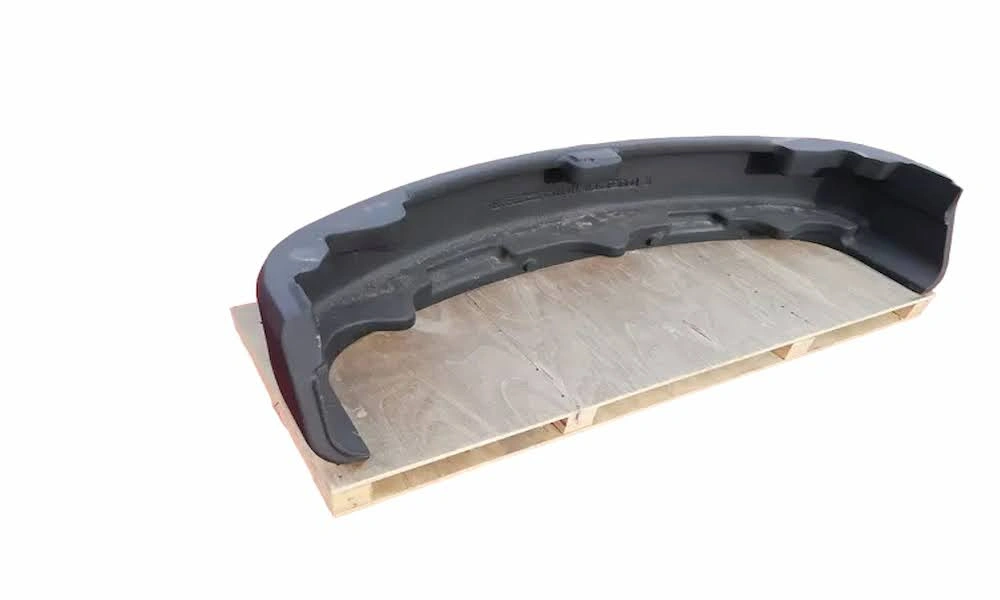
Structural Equipment
The silicone molds can make robust and durable polyurethane casting parts for construction equipment like brackets, supports, fixtures, component housings, and custom fittings.
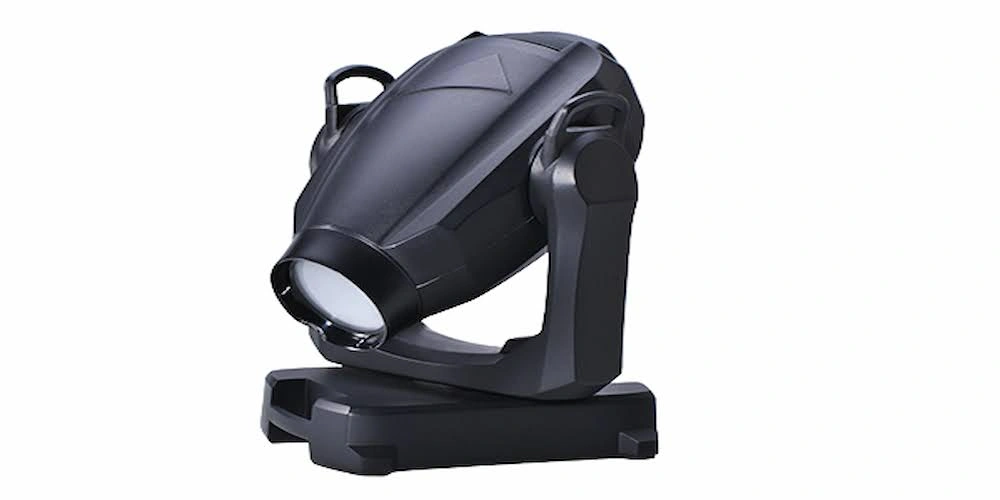
Rapid Prototyping Development
The quick manufacturing process, low cost of silicone molds, precision, and complexity all favored vacuum casting for the rapid prototyping of countless designs. It facilitates the design testing, validation, and production of end-use samples.
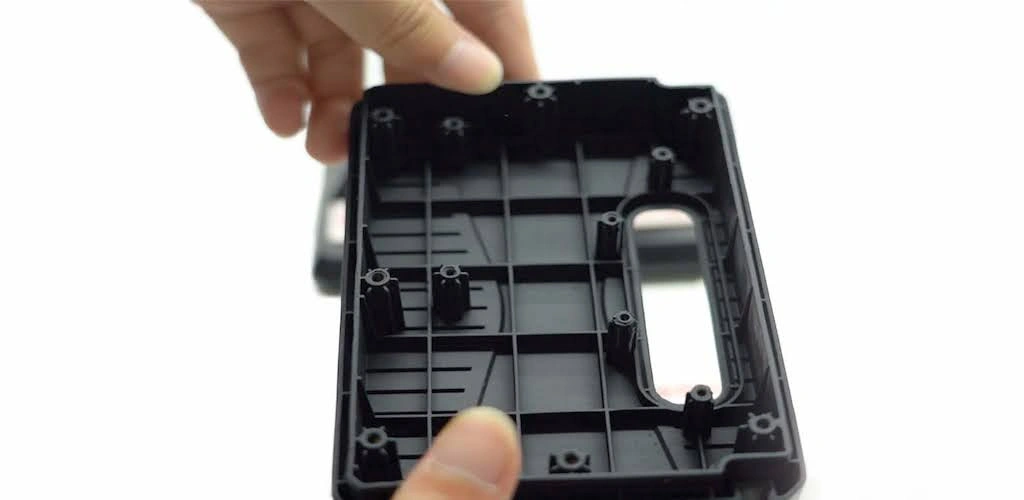
Enclosures & Housing Equipment
Vacuum casting is ideal for electronic housings, protective enclosures, equipment casings, and protective covers for industrial items.
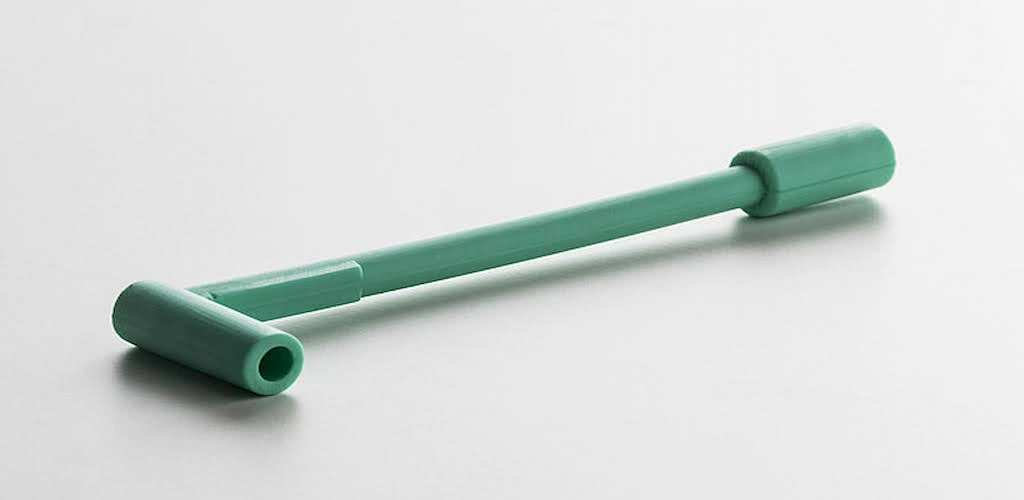
Consumer Products
Three main reasons prevent the popularity of urethane casting, customization, versatility, and surface finish. Some examples include kitchen utensils, decorative items, picture frames, toys, fitness equipment accessories, and watch & jewelry prototypes.
Vacuum Casting Parts Gallery
Vacuum Casting FAQs
What is vacuum casting?
How Does Vacuum Casting Compare to Injection Molding?
What Materials Are Commonly Used in Vacuum Casting?
What surface finishing options can provide urethane casting resin?
What is the shrinkage rate in the urethane casting process?
Get Your Parts Made Today
All uploads are secure and confidential.
